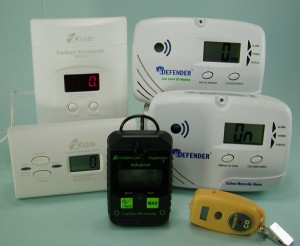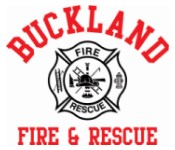 Carbon monoxide (CO) is odourless, colourless, tasteless, non-irritating, poisonous — and deadly.
Carbon monoxide (CO) is odourless, colourless, tasteless, non-irritating, poisonous — and deadly.
Excessive amounts of CO will form if there is not an adequate air supply when burning common fuels, such as natural gas, propane and kerosene.
When CO is inhaled, red blood cells don’t get the oxygen they need. Prolonged exposure to high concentrations of CO leads to unconsciousness, convulsions, brain damage and ultimately, death.
How to help keep your home and family safe from CO
Don’t put your family’s safety at risk — a carbon monoxide detector in your home alerts you to danger before physical symptoms become noticeable. Follow the manufacturer’s instructions for placement, maintenance and replacement of your detector.
Carbon monoxide detectors are just part of the solution. Practice the following tips to help keep your family safe:
- Ensure gas equipment, chimneys and gas appliances (including gas ranges) are properly installed, maintained and inspected annually by a licensed gas contractor.
- Check your furnace filter and change it regularly.
- Never leave your vehicle idling in the garage, even if the door is open. Start lawn mowers and snowblowers outside.
- Open a window to replace air before you light a wood-burning fireplace or woodstove. Keep it open until the fire is completely extinguished.
- Keep the area around gas equipment clear; it needs air for the flame to burn properly. If the equipment is blocked, the airflow will be stifled or the flame will go out — either can cause CO.
- Make sure the furnace and water heater vent pipes to the chimney are in good condition and are securely fastened.
- Keep furnace panels and grills in place and make sure the fan compartment door is secure.
- Keep flue vents and chimneys clear of debris and other blockages, including frost and snow.
- Don’t operate an unvented appliance (e.g. barbecue or portable propane heater) in an enclosed space, such as a garage, ice shack, tent, shop, shed, automobile, RV or trailer, or near any combustible materials.
- Never operate a generator in a house, garage or any enclosed building.
- Install an adequately sized combustion air supply duct in your furnace room or near your gas appliances. This is especially important for homes being upgraded for increased energy efficiency.
- Follow manufacturer’s instructions for proper operation and care of heating equipment and appliances.
- Never tamper with, or attempt to adjust, heating devices or safety controls on heating equipment and appliances.
- If you are adding a new fuel-burning appliance or making changes to the ventilation system in your home (like adding more insulation), consult a qualified heating contractor. These changes may impact the operation of your existing gas appliances, which could depressurize your house and potentially lead to CO.
What to do if your CO detector alarm goes off
If someone is experiencing symptoms of CO poisoning, everyone should leave the house immediately. Call 911 (or your local fire department if you live in an area without 911 coverage) as soon as you are in a safe location outside of your home. Seek medical treatment for those experiencing symptoms.
If no one is experiencing symptoms, remain calm. Determine the reason for the alarm. Your detector may be at the end of its lifespan (3-5 years) or it may have reacted to:
- A low/dead battery;
- Exhaust fumes from a nearby vehicle;
- Prolonged humidity, if installed near a bathroom or an open window when it’s humid outside;
- Chemicals, cleaning products or cigarette smoke;
- Accumulated low levels of carbon monoxide; or
- Lint and hair build-up on sensors.
If you can’t determine why your carbon monoxide detector sounded the alarm, open your doors and windows for fresh air and call a licensed gas contractor to inspect your appliances and check for other possible sources of carbon monoxide.
